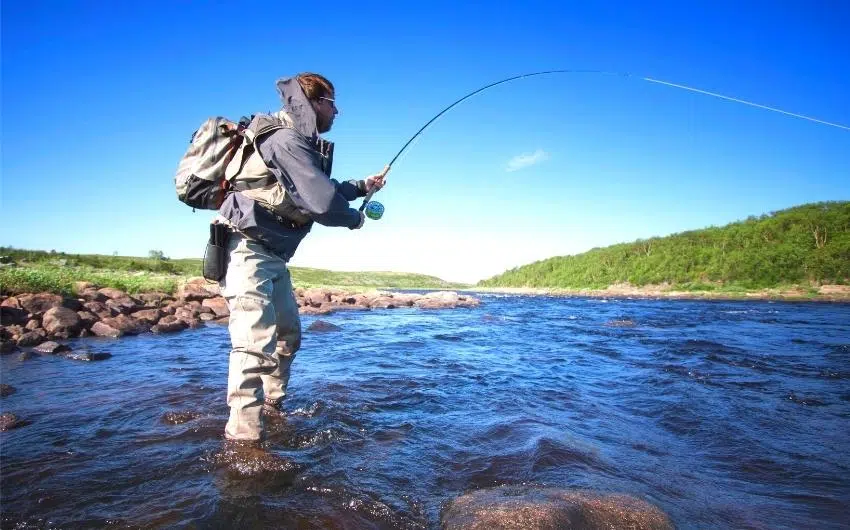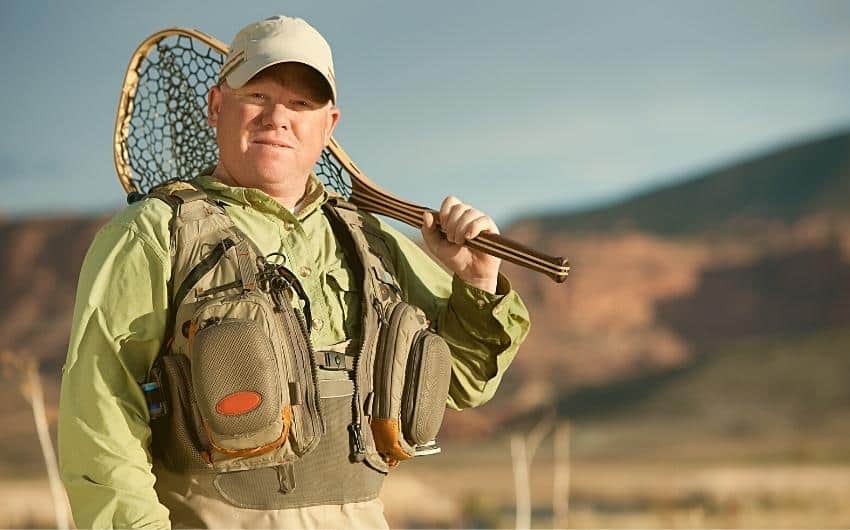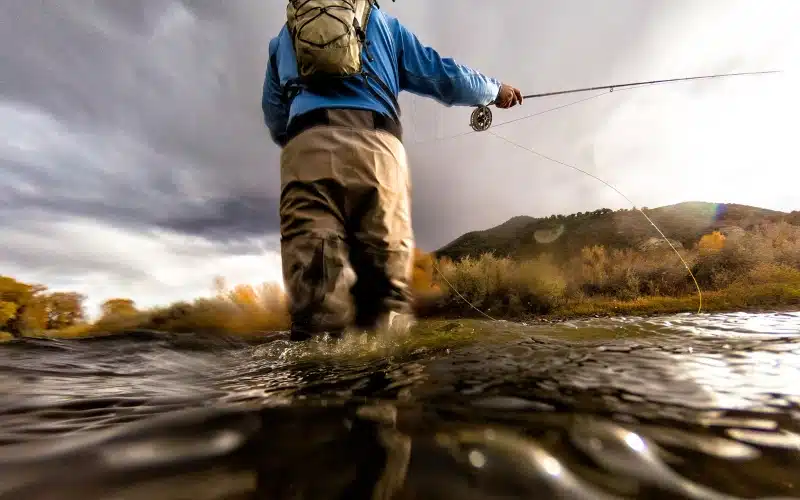When was fly fishing invented? Fly fishing is a beloved pastime for many, providing a therapeutic escape into nature and a chance to test one’s skill and patience. But have you ever wondered when this iconic angling technique was first invented?
The origins of fly fishing can be traced back thousands of years to ancient civilizations such as the Egyptians and the Romans. However, it is believed that the modern practice of fly fishing, as we know it today, originated in Europe during the Middle Ages.
In the 15th century, fly fishing gained popularity in England, with figures like Dame Juliana Berners penning the first known English book.
Since then, fly fishing has evolved into a global sport, with enthusiasts worldwide practicing and cherishing this timeless art form.
Whether you are a seasoned angler or a beginner looking to dip your toes into the water, exploring the history of fly fishing can deepen your appreciation for this cherished pastime.
Quick Jump
ToggleWhen Was Fly Fishing Invented?
Fly fishing is an ancient angling technique that traces its roots back to the second century. The practice of using artificial lures made of feathers and fur tied to hooks was first mentioned in Roman literature.

However, it was in the fifteenth century in England that fly fishing became popular. Izaak Walton’s “The Compleat Angler,” published in 1653, played a significant role in popularizing the technique.
Over the years, different casting techniques, fly designs, and equipment have been developed, but the essence of fly fishing remains the same: the art of presenting an imitation fly to entice fish to bite. Today, fly fishing continues to captivate anglers worldwide.
Where Was Fly Fishing Invented: (Origin of Fly Fishing)
The exact origins of fly fishing are unknown, but it is believed to have been first invented in Japan, with evidence dating back to the 2nd century AD.
The earliest recorded use of an artificial fly is described in the book On the Nature of Animals by Claudius Aelianus, a Roman author who wrote about a Macedonian fishing technique involving a fly made of red wool and two feathers.
Fly fishing was later adopted by Europeans and became popularized in England during the 16th century. The British made several innovations to the design and purpose of fly fishing, including developing new styles of flies and rods and improved techniques for casting lines.
Fly fishing was brought to North America by European settlers in the 17th century, and it quickly became a popular pastime. Native American and European fishing traditions influenced the development of fly fishing in the United States.
Today, fly fishing is practiced worldwide, one of the most popular forms of fishing. It is known for its challenge and beauty, and it is a great way to connect with nature and experience the outdoors.
History of Fly Fishing in America
Fly fishing was brought to North America by European settlers in the 1600s and quickly became popular in the Catskill Mountains of New York.
In the late 1800s, American anglers such as Theodore Gordon began to develop new fly fishing techniques and tackle.
Gordon was particularly interested in dry fly fishing, which involves casting flies that float on the water’s surface. This technique was revolutionary at the time, and it helped to make fly fishing more effective and enjoyable.
In the early 20th century, fly fishing grew in popularity, thanks partly to the writings of Ernest Hemingway and other famous anglers.
Hemingway was a passionate fly fisherman, and his stories helped to introduce the sport to a broader audience.

In the mid-20th century, fly fishing experienced a boom in popularity. This was due to several factors, including the developing of new synthetic fly lines and rods and the increased accessibility of public fishing areas.
Today, fly fishing is one of the most popular forms of sport fishing in the United States. There are millions of fly anglers across the country, and people of all ages and backgrounds enjoy the sport.
Here are some of the critical milestones in the history of fly fishing in America:
- 1600s: European settlers brought fly fishing to North America.
- 1830s: Thaddeus Norris published “The American Angler’s Book,” considered the first comprehensive guide to fly fishing in the United States.
- 1880s: Theodore Gordon pioneers the dry fly fishing technique in the Catskill Mountains.
- 1900s: Fly fishing becomes more popular and accessible, thanks to the development of new tackle and the increased availability of public fishing areas.
- 1950s: Fly fishing experiences a boom in popularity, thanks to the writings of Ernest Hemingway and other famous anglers.
- Today, Fly fishing is one of the most popular forms of sport fishing in the United States, with millions of anglers nationwide.
Fly fishing is a challenging and rewarding sport that people of all ages and skill levels can enjoy. It is a great way to connect with nature and experience the beauty of the outdoors.
Popularity Of Fly Fishing Over Time
Over time, fly fishing has become increasingly popular as a sport and a recreational activity. Historically, fly fishing was primarily seen as a means of survival and sustenance, with its origins dating back thousands of years.
However, it has become a beloved pastime for many enthusiasts worldwide in recent years. This rise in popularity can be attributed to various factors.
The development of better and more accessible fishing equipment, increased awareness and appreciation for conservation efforts, and the allure of connecting with nature are all key factors driving the increased interest in fly fishing.
The timeless appeal and the tranquility of casting a line into pristine waters continue to attract individuals to this timeless sport.
Dry Fly Fishing Techniques
Dry fly fishing is a technique that uses artificial flies that float on the surface of the water to catch fish. It is a popular trout fishing method but can also catch other fish species, such as grayling and bass.
The best time to fish dry flies is when the fish attracted and maddened on the surface, typically during hatches of insects. Hatches are when large numbers of insects emerge from the water as adults, and trout often rise to the surface to feed on them.
To fish dry flies effectively, it is essential to present the fly in a way that is natural and looks like an actual insect. This means casting the fly accurately and ensuring it floats naturally on the water’s surface.
Here are some tips to gain a dainty mouthful catches:
- Use the right gear. You will need a fly fishing rod, reel, line, leader, and dry flies. The specific fly fishing gear you need will depend on the type of water you are fishing and the size of the fish you target.
- Choose the right fly. Many different types of dry flies are available, so choosing one that imitates the insects the fish are feeding on is essential. You can ask a local fly shop for recommendations for flies.
- Cast accurately. Casting your fly accurately so it lands before the fish without spooking it is essential. Try to cast upstream of the fish so that the fly drifts naturally to the fish.
- Mend your line. Mending your line is a technique that involves using your rod to move your line and fly in the water. This can help keep your fly in the feeding zone and prevent it from dragging.
- Set the hook quickly. You must set the hook quickly when a fish rises to your fly. To do this, raise your rod tip quickly and firmly.
Different Species Targeted By Fly Fishers
Fly fishing is a popular angling method that can catch various fish species in fresh and saltwater. Here is a list of some of the most popular species targeted by fly fishers:
Freshwater:
- Fly fishing for trout.
- Grayling
- Salmon
- Bass
- Pike
- Carp
- Panfish (such as bluegill, sunfish, and crappie)
Saltwater:
- Bonefish
- Tarpon
- Permit
- Snook
- Redfish
- Striped bass
- Tuna
- Mahi-mahi
- Sailfish
- Marlin
Fly fishers typically use artificial flies to imitate the natural food sources of the fish they are targeting. Flies can be made from various materials, including feathers, fur, and synthetic fibers. Fly fishers must also learn how to cast their flies accurately and present them to fish enticingly.
Fly Fishing Today: The Evolution of Fly Fishing
Fly fishing has come a long way since its origins in ancient times. It has become a popular sport and recreational activity, attracting worldwide enthusiasts.
With advancements in technology and modern fly tying materials, fly-fishing equipment has become more efficient and specialized, making it easier for anglers to cast lines and catch fish.
The sport has also seen a shift in focus from purely catching fish to embracing the experience of being in nature and practicing sustainability. Anglers now often prioritize catch-and-release practices to preserve fish populations and their habitats.
Additionally, modern fly fishing has expanded to include women and younger generations, breaking away from the traditionally male-dominated stereotype.
Today, fly fishing has become a diverse and inclusive activity that allows people to connect with nature and embrace the tranquility of fishing.
Fly Fishing Around the World
Fly fishing is a beloved angling method enjoyed by anglers around the world. It combines skill, finesse, and a deep connection to nature. Here, we’ll explore some of the most renowned fly-fishing destinations across the globe:
- Montana, USA: Known for its pristine rivers like the Madison, Yellowstone, and the Big Hole, Montana is a paradise for fly anglers. It offers diverse trout species and breathtaking scenery.
- Iceland: The land of fire and ice is also a land of crystal-clear rivers teeming with salmon and trout. The wilderness and solitude in this remote country make it an angler’s dream.
- New Zealand: Famous for its large brown and rainbow trout, New Zealand’s South Island boasts stunning landscapes, from lush rainforests to mountain ranges.
- Patagonia, Argentina: This region offers the world’s best fly fishing for massive sea-run brown and rainbow trout. The Andes Mountains provide a dramatic backdrop.
- Alaska, USA: Alaska offers many fly fishing opportunities, from salmon runs to trophy rainbow trout in its wild rivers. The state’s remote wilderness is a draw for adventurous anglers.
- The Bahamas: Crystal-clear flats in the Bahamas are a bonefish haven, and the region’s tropical climate and beautiful beaches make it a top saltwater fly fishing destination.
- Slovenia: Known as the “Emerald River,” Slovenia offers pristine streams and rivers with abundant trout and grayling. Its picturesque landscapes make it a hidden gem.
- Mongolia: For a unique experience, consider fly fishing in Mongolia. The pristine waters are home to the lenok, taimen, and amur trout.
- Scotland: Scotland’s rivers and lochs are famous for salmon and brown trout. The historical and cultural significance adds to the charm of this fly fishing destination.
- Kamchatka Peninsula, Russia: This remote wilderness is home to wild rainbow trout, salmon, and char. The landscape is rugged, and the fishing experience is unparalleled.
Remember that each destination has its regulations, seasons, and local customs, so it’s essential to research and plan accordingly.
Fly fishing clubs first emerged in England in the late 18th century, setting the stage for the emergence of dry fly fishing as a somewhat exclusive pursuit. The slower rivers and taller aquatic vegetation found in Southern England played a pivotal role in the evolution of the dry fly fishing technique.
Fly Fishing Invasive Brook Trout in Sweden.
Brook trout, an invasive species in Sweden, was introduced in the late 19th century. They have since spread to many lakes and streams and are now considered a significant threat to native fish populations. However, they are also a popular target for fly anglers.
To fly fish for brook trout in Sweden, you will need a light- to medium-weight fly rod, reel, and various fly patterns. Dry flies like the Stimulator, Elk Hair Caddis, and Adams are good choices, as are nymph patterns like the Woolly Bugger and Pheasant Tail Nymph.
Brook trout can be found in various habitats in Sweden, but they are most common in cold, clear lakes and streams. They are particularly fond of riffles and pools with plenty of cover.
When fly fishing for brook trout, it is important to be stealthy. These fish are easily spooked, so it is vital to approach your fishing spots carefully. Casting from a distance is also important, especially when fishing in clear water.
Once you have found a likely spot, start by casting your fly upstream and letting it drift downstream naturally. If you are using a dry fly, give the fish ample time to see the fly before setting the hook. If you are using a nymph, try casting it into pockets of water or undercover.
Brook trout are a beautiful and challenging fish to catch on the fly. You can enjoy a rewarding day of fishing for these invasive fish in Sweden with patience and skill.
Commonly Asked Questions about the Fascinating History of Fly Fishing (FAQs)
Where Did Fly Fishing Originate?
Fly fishing is believed to have originated in Japan over 430 years ago and was later adopted by Europeans in the 2nd century AD. It became popularized in England during the 16th century and was brought to the Americas by European settlers.
Who invented fly fishing?
The exact inventor of fly fishing is unknown, but the earliest reference comes from the Roman author Claudius Aelianus in the 2nd century AD. He described the practice of Macedonian anglers using artificial wet flies to catch fish.
When did fly fishing start in America?
Fly fishing was introduced to America by European settlers in the 1600s. It quickly became popular among Native Americans, and by the 1800s, it was a well-established sport in the United States.
Where did fly fishing start in USA?
Fly fishing started in the USA in the Catskill Mountains of New York in the late 1800s. It was popularized by wealthy fishermen from New England, who were drawn to the region’s abundant trout streams.
When was dry fly fishing invented?
Dry fly fishing was invented in the mid-19th century in England. It is credited to several anglers, including James Ogden, Frederic M. Halford, and George Pulman.
What was the first fish to fly?
The first fish to fly was a prehistoric fish called Potanichthys xingyiensis. It lived about 240 million years ago and had large pectoral fins that allowed it to glide through the air.
Is fly fishing Japanese?
Fly fishing is not solely Japanese but has a long and rich history in Japan. Tenkara, a traditional Japanese fly fishing method, originated in Japan’s mountains over 400 years ago. It uses six feet long, flexible fishing rods and simple flies to catch trout and other fish.
Where was the first flying fish?
The first flying fish was found in Xingyi, China, in 2014. It is a fossil of a prehistoric fish called Potanichthys xingyiensis, which lived about 240 million years ago.
Who made the first fly reel?
The first fly reel is credited to William Billinghurst, a gunsmith from Rochester, New York. He patented his design in 1859. Billinghurst’s reel was made of wire and castings and had a side-mount design.
Conclusion
So, when was fly fishing invented? In conclusion, fly fishing may be a timeless art that has captivated anglers for centuries. Its roots can be traced back to ancient times when resourceful fishermen devised innovative ways to outsmart their elusive prey. Over the years, fly fishing has evolved into a beloved sport, combining skill, patience, and an appreciation for nature. Today, enthusiasts worldwide embrace the tranquility of casting a delicate fly onto the water’s surface, hoping to entice a strike. So, the next time you find yourself by a peaceful river, take a moment to reflect on the fascinating fly fishing history and the passion it ignites within those who practice it. After all, it’s incredible to think that this beloved technique was first invented many centuries ago.
You might also like fly fishing and fly tying articles
- Why Is It Called Fly Fishing? (Meaning, Best Baits & More)
- Is Fly Fishing Hard to Learn? A Complete Beginner’s (Guide)
- Fly Fishing Lanyard Setup – Everything You Need to Know
- What is fly fishing vs regular? – FlyFishing Basics Explained
- Fly Fishing Vs Regular Fishing: The Ultimate Showdown!
- Fly Fishing Casting: 9 Exclusive Fly Casting Beginner Tips
- New Mexico Fly Fishing: Best Rivers, Lakes and Streams
- Saltwater Fly Fishing for Beginners (Ultimate Guide)
- Parachute Adams Dry Fly: (How to Tie & Where to Buy)
- 10 Best Fly Tying Patterns for Trout: A Step-By-Step (Guide)


